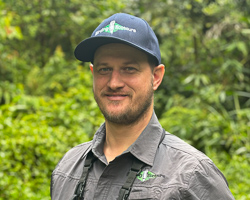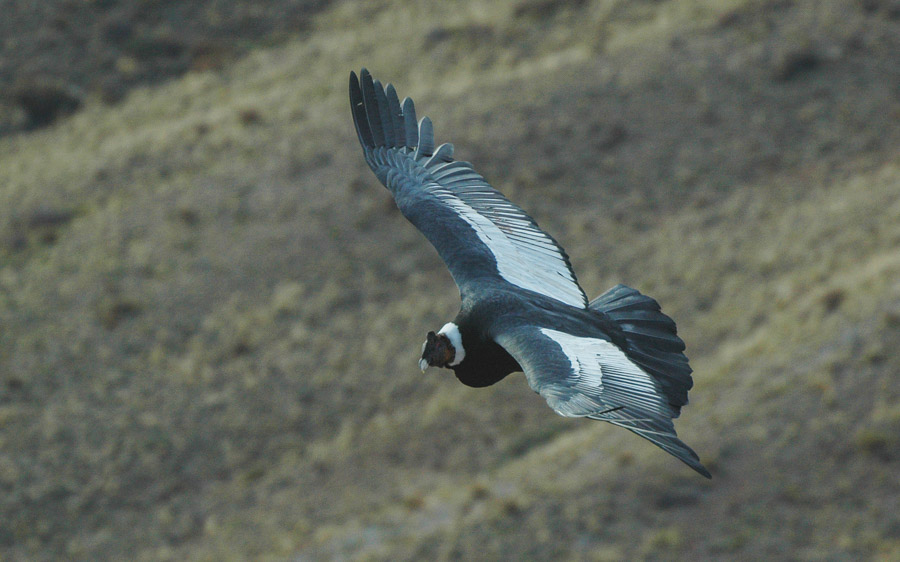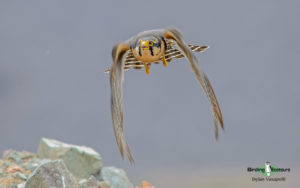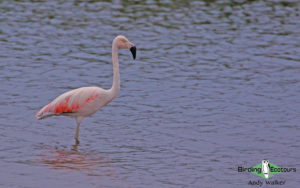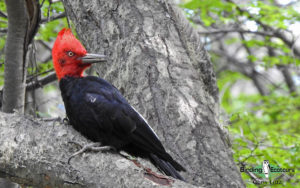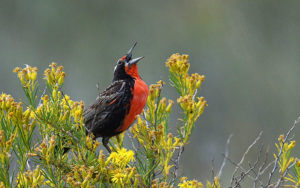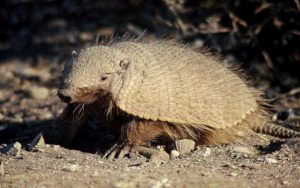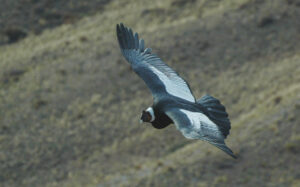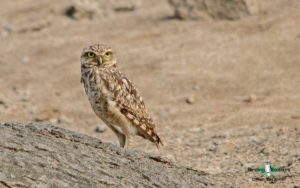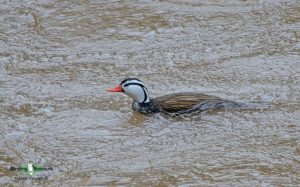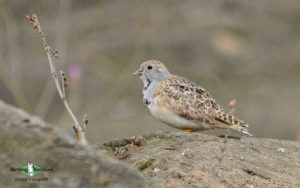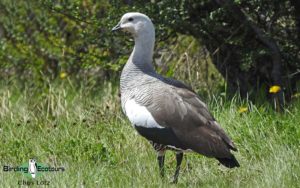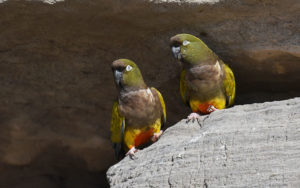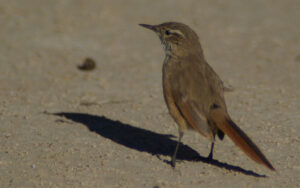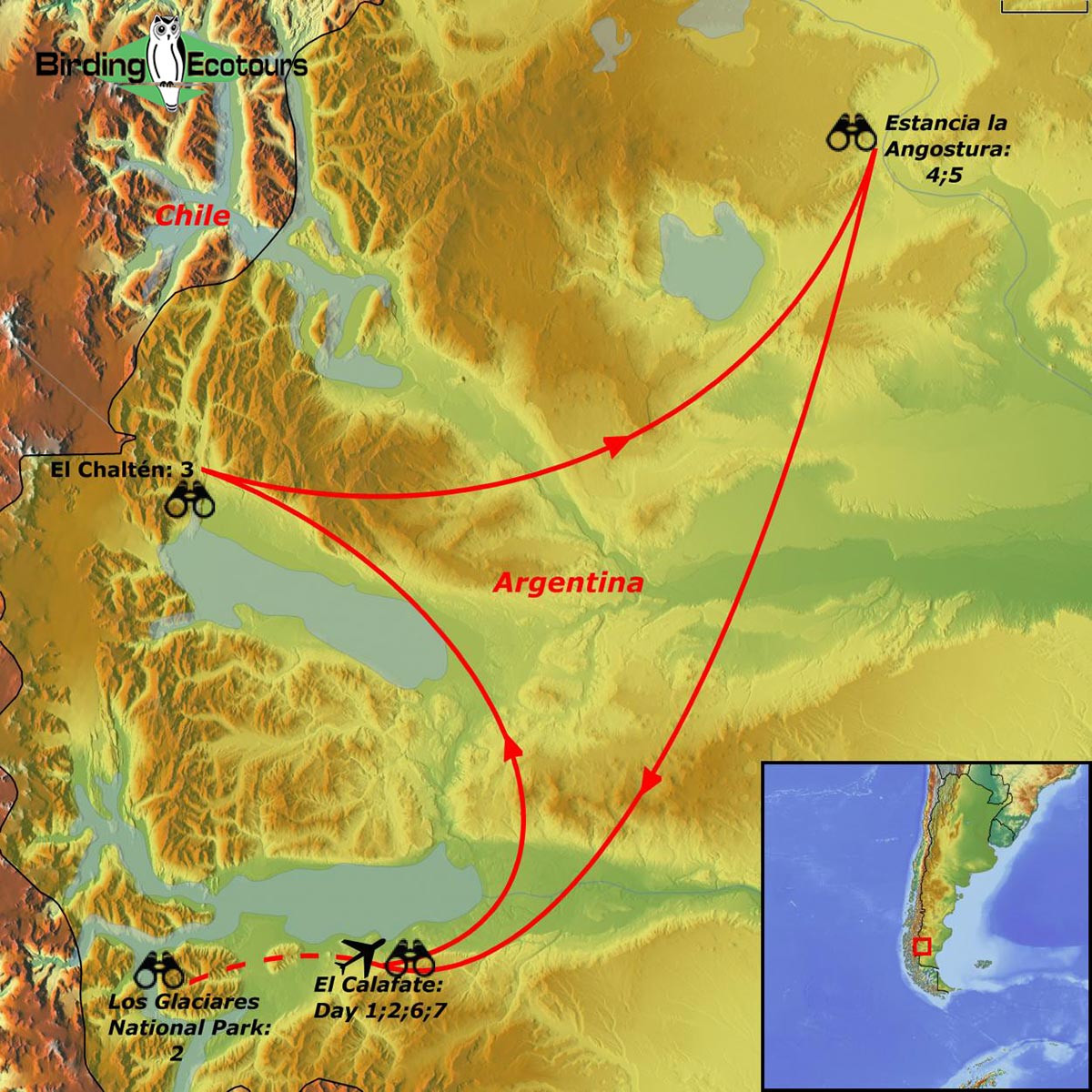Southern Patagonia: Los Glaciares National Park, Austral Rail and Hooded Grebe
Go to: Argentina Birding Tours | Birding Tours in the Neotropics | All our birding tours
Southern Patagonia: Los Glaciares National Park, Austral Rail and Hooded Grebe
November 2025/2026
This tour combines some of the most diverse birding areas of the Southern Cone in Argentina: Los Glaciares National Park and the vast steppes of southern Patagonia. The region hosts a wide diversity of habitats, such as massive glaciers that flow from the vast Southern Patagonian Ice Field, thick deciduous and evergreen forests, vast steppes, rivers, snow-capped peaks, wetlands, and mountain grasslands, all home to a wide diversity of birds. Some of birds we’ll be looking for include Magellanic Woodpecker (the largest woodpecker in South America), the rare Austral Rail, the Critically Endangered Hooded Grebe at Strobel Plateau, and the healthiest population of Andean Condors on the continent.
Andean Condor (photo Alejandro Ronchetti) is one of our targets on this southern Patagonia tour.
This tour can be combined with one or both of our preceding Argentina birding tours: Argentina – Northwest from the foothills to Puna followed by our Northeast – Iberá Marshland and Iguazú National Park.
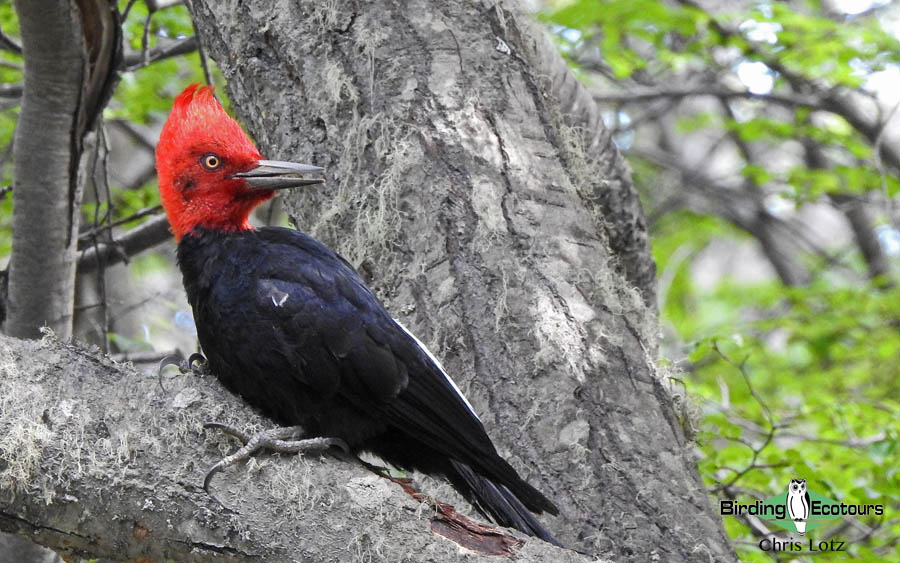
Itinerary (7 days/6 nights)
Day 1. El Calafate
This exciting birding trip will begin at the El Calafate International Airport, located near the enormous Argentino Lake. After lunch we will visit the Laguna Nimez Natural Reserve, an urban wildlife preserve that protects this impressive wetland. Here we hope to find Magellanic Plover, Chilean Flamingo, Upland Goose, Red Shoveler, White-winged Coot, Cinereous Harrier, Austral Negrito, and Chilean Swallow, among many others.
Overnight: Hotel Mirador del Lago, El Calafate
Day 2. Los Glaciares National Park
Today we will spend the entire day visiting the Los Glaciares National Park. Along the drive across the Patagonian steppes we may encounter Black-chested Buzzard-Eagle, Variable Hawk, Short-billed Miner, Sharp-billed Canastero, Scale-throated Earthcreeper, White-browed Ground Tyrant, and Patagonian Yellow Finch. We will visit the Perito Moreno Glacier, one of the few glaciers on earth still advancing. At the beech forest around the glacier we should see Austral Parakeet, Thorn-tailed Rayadito, Austral Blackbird, Black-chinned Siskin, and many more.
Later in the day we will also visit a group of ponds, where we might see the likes of Andean Duck, Magellanic Oystercatcher, Black-necked Swan, and Wren-like Rushbird.
Overnight: Hotel Mirador del Lago, El Calafate
Day 3. El Chaltén
Today we will head north driving across the Patagonian steppes and badlands, where we hope to find Lesser Rhea, Patagonian Tinamou, Least Seedsnipe, Aplomado Falcon, Rufous-chested Dotterel, Long-tailed Meadowlark, Cordilleran Canastero, and Band-tailed Earthcreeper. After a four-hour drive we will arrive at El Chaltén, a small town located at the foot of Monte Fitz Roy, one of the most iconic mountain peaks in Patagonia.
In the afternoon we will drive to a series of rapids at the Las Vueltas River, where we hope to see Torrent Duck. In this area we will also target Magellanic Woodpecker, the largest South American woodpecker, along with Ashy-headed Goose, Lesser Horned Owl, Austral Pygmy Owl, Bronze-winged Duck, White-throated Treerunner, Dark-bellied Cinclodes, Patagonian Tyrant, Ochre-naped Ground Tyrant, and Diuca Finch.
Overnight: Hotel Lunajuim, El Chaltén
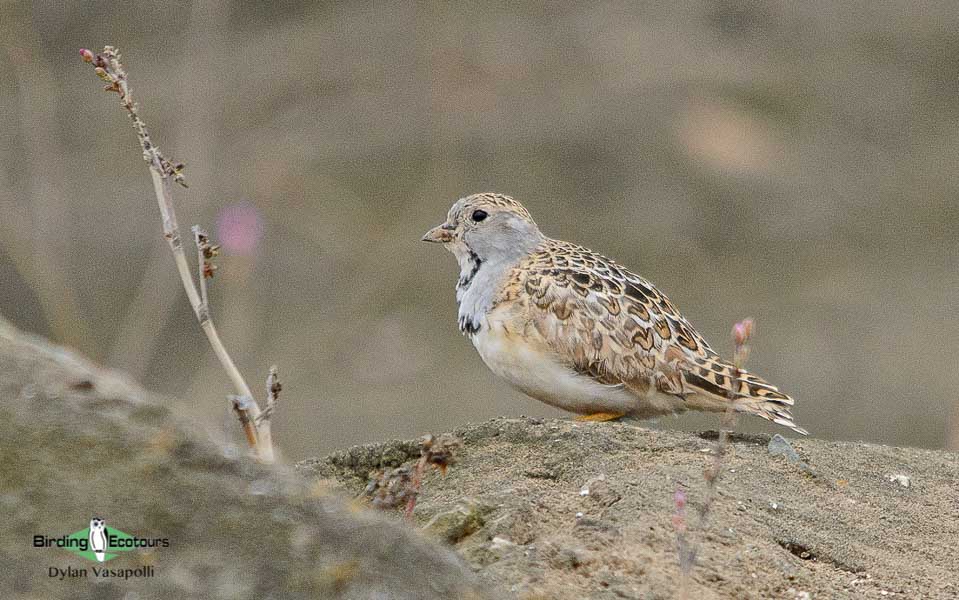
Day 4: El Chaltén to Estancia la Angostura
We’ll have an early departure for our long drive northward across the Patagonian steppes and semi-deserts, with stops en route, before reaching Estancia La Angostura. This cattle ranch hosts numerous wetlands where the extremely rare and Endangered Austral Rail has been recorded on numerous occasions. The afternoon will be spent in search of this rarity in the reed beds and along the pond edges. Today we should also see Andean Condor, White-throated Caracara, Black-faced Ibis, Austral Negrito, Chocolate-vented Tyrant, Grey-bellied Shrike-Tyrant, and Greater Yellow Finch.
Overnight: Estancia la Angostura
Day 5. Estancia la Angostura
We have the full day to search for our primary target, Austral Rail. We will also visit some nearby ponds to look for Black-necked and Coscoroba Swans, Flying Steamer Duck, Crested Caracara, Bicolored Hawk, Tawny-throated Dotterel, Grey-breasted Seedsnipe, Chilean Flicker, Austral Canastero, Tufted Tit-Tyrant, Great Shrike-Tyrant, Patagonian Yellow Finch, Patagonian Sierra Finch, and Yellow-bridled Finch.
Overnight: Estancia la Angostura
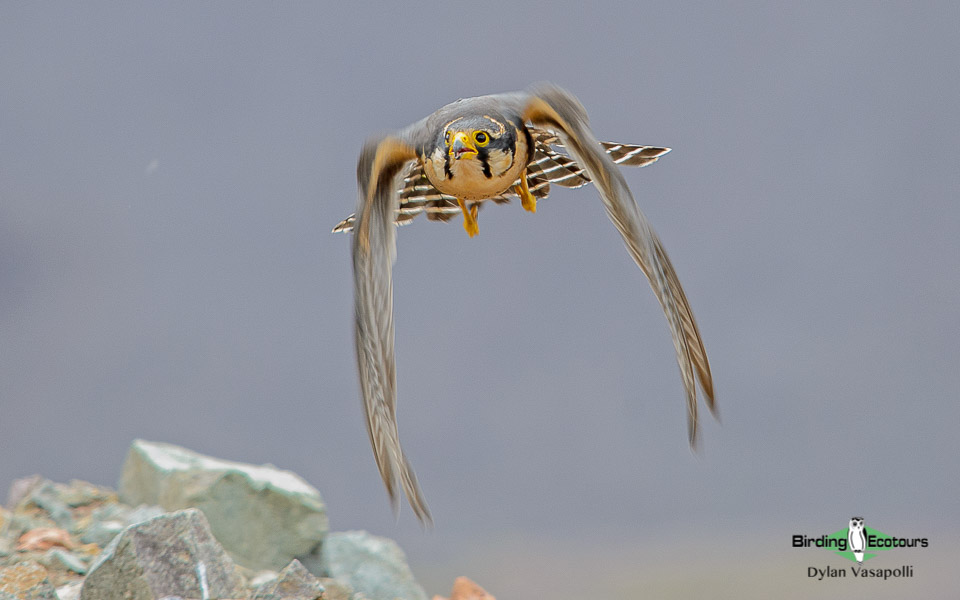
Day 6. Strobel Plateau for Hooded Grebe
Today we have an exciting full-day trip to Laguna Verde and other ponds and lakes on the extensive basaltic landscapes of Strobel Plateau. The expedition to the Strobel Plateau will require the use of 4×4 vehicles from a nearby sheep ranch, due to the difficult terrain of the rocky steppes.
Here the Critically Endangered Hooded Grebe nests in small colonies in a few of the ponds which are protected from the wild winds of the Patagonian steppes. A few other species also share this habitat in the form of Silvery Grebe, Fuegian Steamer Duck, Chilean Flamingo, Upland Goose, Magellanic Plover, Least Seedsnipe and Long-tailed Meadowlark.
Overnight: Estancia la Angostura
Day 7. Departure
We will drive back to El Calafate with some birding on the way, with a six-hour drive ahead of us today. Our route will lead across the Patagonian steppes, wetlands, and patches of beech forests. On the drive we may find Patagonian Tinamou, Burrowing Parrot and Bronze-winged Duck, as well as mammals such as Guanaco (a wild relative of the llama) and perhaps even Large Hairy Armadillo. Today will mark the end of seven days of fantastic birding and scenery in southern Patagonia. We will organize transfers for you to the El Calafate International Airport to board your departure flights.
Please note that the itinerary cannot be guaranteed as it is only a rough guide and can be changed (usually slightly) due to factors such as availability of accommodation, updated information on the state of accommodation, roads, or birding sites, the discretion of the guides and other factors. In addition, we sometimes have to use a different international guide from the one advertised due to tour scheduling.
Download Itinerary‘My trip to Argentina was amazing! We always see huge numbers of species on Birding Ecotours trips, and this one was no exception. Add to that the scenery in the Andes, among the most spectacular anywhere; meanwhile, accommodations, arrangements, and guiding were fully up to Birding Ecotours’ usual standards. Eduardo is a great guide, always watching out for our welfare as well as finding the birds, and Diego was one of the more knowledgeable – and friendly – local guides we have had in years. As my trip focused on the northwest, I look forward to visiting the rest of this wonderful country soon.’
Bill
